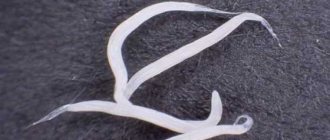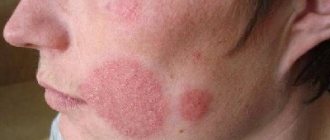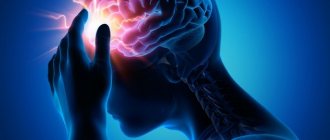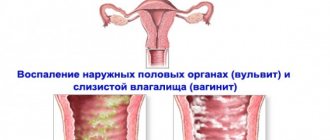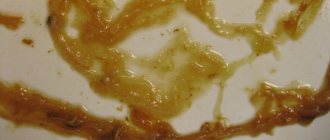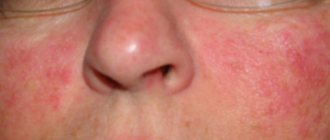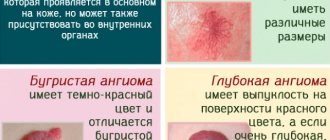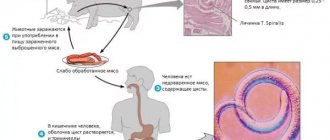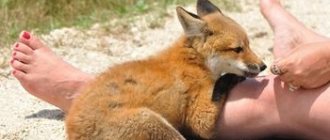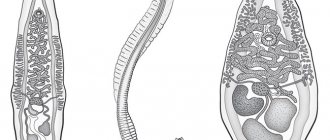The human body is affected by different types of parasites that live on or inside the body, localized in different organs and systems. They differ in size, functioning characteristics, and enter the body in different ways. But they all have one thing in common - a detrimental effect on health. In the process of life, they damage organs, release toxins, and absorb nutrients necessary for the full functioning of the body. In case of infection, it is important to begin timely treatment.
What is this?
Red worms found in feces can be many types of worms. Most often, this shade of the body surface is found in the following helminths:
- Roundworms.
- Ankistolomas or, as they are simply called, crooked heads and necators.
For what reason the parasites acquire red tints is currently not clear. But if you find them in the contents of your stool, you should not be alarmed. Whether they are small, long, flat or round, these are not exotic species of helminths unknown to doctors, but worms familiar to every parasitologist.
Is it possible to see such worms in feces?
It is difficult to see roundworms, parts of their bodies or eggs with the naked eye.
A living parasite is constantly in motion and is not excreted in feces. Sometimes living individuals can be found on underwear and bedding. The eggs are microscopic in size. After anthelmintic therapy, body parts of dead worms may be excreted in the feces, but it is still difficult to notice them.
Adult hookworms can be seen in feces, and their eggs can be identified microscopically.
What diseases do they cause?
Worms, which most often have a red color on their body surface, cause the following parasitic diseases in humans:
- ascariasis;
- hookworm.
Both diseases are extremely dangerous, since the parasites excite them, tend to migrate throughout the human body and more often than others cause atypical extraintestinal helminthiases.
Type of development
This helminthiasis is the most dangerous, according to many parasitologists. Its danger lies in the fact that roundworms, during the stage of migration through the human body, are able to settle outside the intestines, forming a focus of the disease:
- In the eye.
- In the brain.
- In the liver.
- In the heart and other organs.
With such a development of the disease, which followed an atypical path, it is, of course, unlikely to detect parasites in feces. People find red worms, related to roundworms, in the contents of stool at the typical localization of the source of the disease, that is, in the small intestine.
Roundworms are free-moving nematodes. They are not attached to the walls of organs and constantly move in the intestinal lumen. For these reasons, ascariasis is often accompanied by severe abdominal pain, a feeling of discomfort, and indigestion. When there are too many parasites, they migrate from the section of the small intestine below, since there is no longer enough space for the worms in the original source of invasion.
It is these parasitic worms that end up in feces. That is, in the case when “red threads” are found in the contents of feces, helminthiasis is already in a critical state, and the number of worms has reached an extremely high level.
Diagnostics
In order to diagnose the presence of parasites in the body, laboratory and instrumental diagnostic methods are used:
- Stool examination.
- Urine examination.
- Blood test.
- Sputum examination.
- Bile examination.
- Ultrasound, computed tomography, x-ray.
Laboratory diagnostics are needed in order to determine the presence of parasites in a particular organ, the degree of the disease and concomitant diseases that occur when the body is affected by red worms. Instrumental diagnostics helps to establish the location of parasites in the body.
Symptoms
Signs of ascariasis are specific discomfort, poor health and a depressed emotional state. However, people begin to notice the symptoms of the disease only when there are a lot of nematodes in the stomach, and then they also appear in the feces.
The main signs of this disease, with the exception of worms in the feces, are as follows:
- abdominal pain, cutting sensations;
- bloating;
- flatulence;
- peristalsis disorders, from prolonged diarrhea to constipation;
- a periodic feeling of nausea, with a possible transition to spontaneous vomiting;
- heartburn, specific taste in the mouth;
- increased body temperature;
- the appearance of a skin rash similar to urticaria with high sensitivity;
- changes in taste preferences and appetite in general;
- constant desire to drink, feeling thirsty;
- increased salivation;
- sweating and shortness of breath;
- headaches, emotional depression or instability.
Manifestations of the disease vary from person to person. But the presence of roundworms invariably causes tangible signs of discomfort in both adults and children.
In babies under one year of age, the disease manifests itself many times faster than in others. Signs of infection with red worms of this species in infants are as follows:
- Poor appetite.
- Constant hysterical scream and, as a result, hernias.
- Feces with mucus.
- Profuse belching, the baby regurgitates almost everything he eats.
- Putrid specific smell from masses of regurgitation.
- Skin rash.
- Bad dream.
- Blood in feces.
- Diarrhea or, conversely, constipation.
- Strongly swollen abdomen, dense, hard on palpation.
If small reddish “threads” are found in the contents of feces, then anyone, even those far from medicine, understands that this is a sign of a parasitic disease. However, roundworms can form foci of infestation outside the intestine. Young parents should take this into account and contact parasitologists and pediatricians without waiting for worm eggs or themselves to appear in children’s feces.
Roundworms
Nematoda or roundworms are so named because their bodies are long, cylindrical and tapering at each end. Unlike earthworms, nematodes do not have segmented bodies. Most members of this large group are microscopic in size.
Living conditions
Some live on and feed on plants, but some species parasitize animals or eat dead material. Roundworms have long, narrow mouths and eat dead matter, while carnivores have hard, tooth-like mouthparts. Plant parasites use sharp, piercing mouthparts to pierce and suck out the contents of cells, while animal parasites have complex hooks and suckers to keep them attached to the host.
These parasites harm their host by stealing valuable fluids that require energy to replace. More than 20 freshwater arctic species are specifically described, such as Neomesomermis and Paractinolaimus.
Paramononchus arcticus is a predatory freshwater nematode with a sharp tooth in its mouth. Most often, these worms parasitize the bodies of fish. In addition to causing death, they can have other effects on the body of freshwater animals.
Infecting only males, this parasite lives in the tissue directly behind the fish's testicles, reducing its ability to produce healthy, fertile sperm. Infected fish have a duller red color—the worse the nematode infestation, the duller the color. The female prefers to mate with the reddest males, the male with the highest parasite resistance will be colorful and have great mating success.
Most nematodes have drought-tolerant stages in which the worms become inactive. If a constant supply of food and oxygen becomes unavailable, a quick defense is to dry out until conditions improve. These drought-resistant stages are the nematodes' primary means of dispersal.
Reproduction
Nematodes are usually heterosexual; fertilization is internal. In most freshwater species, males deliver sperm directly into the female's reproductive tract. But in other species, the male punctures the female's body wall and releases sperm directly into her body cavity—a mating method known as "traumatic insemination."
Development
Ascariasis, which follows a typical development path, includes several stages:
- infection with eggs in an invasive form, that is, mature;
- incubation period;
- release of the larva and its migration through the bloodstream to the lungs;
- pulmonary period, accompanied by symptoms reminiscent of a cold;
- secondary ingestion of larvae that have risen from the lungs and their return to the intestine;
- an acute period of the disease, during which the formation of an adult worm occurs and the beginning of its active life.
In the absence of therapy, the disease becomes protracted and becomes chronic. Roundworms reproduce sexually and not all worm eggs leave the host’s body. Some of them mature in the intestines, this especially often happens in the presence of clogged areas, rot or other types of waste. This type of helminthiasis does not go away on its own; if this infestation is present, you should undergo a course of treatment.
Sources of infection
The main type of transmission of helminthiasis is household. Possible sources of infection include:
- Personal hygiene items: towel, toothbrush, comb, bed linen;
- Dirty hands;
- Toilets in public places;
- Undercooked meat or fish;
- Unwashed vegetables, berries and fruits;
- Unboiled water from a tap or open source;
- Unprocessed animal.
Some types of parasites are transmitted sexually. These include trichomoniasis.
To prevent infection, you must maintain personal hygiene and wash your hands with soap several times a day. If water and soap are not available, it is recommended to treat your hands with an antiseptic solution.
Vegetables and fruits are washed in running water before eating. It is recommended to wash apples, pears and other fruits that are eaten with their peels with a special product or laundry soap. Animals in the house are treated for helminths using special preparations every 6 months. Boil water before drinking; a young child is given a special bottle: Fruto Nanny, Aqua for children, etc.
Children's nails are cut once a week. The dirt under the nails is cleaned every day. It is easier to clean your nails with an old toothbrush or a special nail file.
Treatment
Ascariasis is treated with many special pharmaceutical drugs. The most commonly used in treating the disease are:
- "Pyrantel".
- "Dekaris."
- "Vermox."
- "Helmintox".
- "Nemozol" and other drugs.
It is important to carry out treatment under the supervision of a doctor and in accordance with his recommendations. After a course of therapy for ascariasis, you should be tested several times. The first ones should be taken no earlier than a couple of weeks after completion of treatment. A further scheme for monitoring the state of health and recommendations for preventive medication are prescribed by a doctor, taking into account the condition of the human body.
Hookworm
“Earth scabies,” as this disease was called the year before and at the beginning of the last century, is caused by parasites, which doctors call Ancylostoma duodenale and Necator americanus.
These parasites primarily enter the human body from the environment, through the skin. But this is not the only possible route of infection; in the traditional way for invasions, that is, by ingesting eggs or larvae, you can also become infected with this type of parasitic disease.
Type of development
The disease is often diagnosed in children who love to play in sandboxes, in gardeners and people whose activities include close contact with soil, water or other environmental objects.
The disease usually begins with the penetration of the active larvae under the skin. At this moment, symptoms characteristic of allergic reactions to insect bites are present. For this reason, at the stage of infection, no one pays attention to the signs of invasion, considering them to be a common manifestation of allergies.
The invasion does not have an incubation period, in the usual sense of the term. This is due to the fact that a person becomes infected not with eggs, but with active larvae of the parasite. Once under the skin, the larva immediately begins active migration to the bloodstream, through which it enters various organs.
In a typical pathogenesis, the focus of the disease is formed by these parasites in the duodenum. Worms adhere to the mucous membrane, obtaining from it all the substances necessary for their pathogenic life activity, while depleting the tissues of the organ and causing their damage - erosions, ulcers, biochemical imbalances, disturbances in metabolic processes.
In the case of atypical development of helminthiasis, parasites can settle in any of the vital organs of a person, for example, in the liver, heart or pancreas. Worms feed mainly on blood, for this reason their bodies often have a specific red color.
The danger of helminthiasis for humans
Parasitic agents multiply and live in the host's body, causing significant changes in the body.
This leads to the development of chronic diseases that constantly recur. The localization of parasites can be in any part of the human body, but most often helminths settle in the organs:
- Gastrointestinal tract;
- In the joints;
- In the muscles;
- In the liver and kidneys;
- In the organs of vision;
- In the lungs;
- Blood system.
Most types of helminths prefer to live in the intestines, but during acute infestation the parasites are forced to migrate. Moving through the body, parasites mutilate the organs that they encounter on their way. Migration can be triggered by improper treatment using traditional methods.
Homemade methods are based on eating bitter herbs and substances that worms do not like. Protozoa leave the intestines in search of a more suitable environment for their life.
The body of a sick person is more susceptible to various diseases, the immune system loses its functionality. An infected person is more likely to suffer from viral and infectious diseases.
The human body reacts sharply to the remains of parasites. The victim experiences symptoms of intoxication, and the allergic reaction worsens. The processes occurring in the body after infection are not fleeting, and a person may not notice the parasitic agent for years.
Symptoms
The symptoms that red worms of this variety can cause have their own specifics at each stage of the disease.
At the time of infection and the first stage of parasite migration, the signs of the disease are as follows:
- redness with enlarged pores at the site of penetration;
- release of clear cell fluid from the pores;
- formation of dense spots or blisters at the site of penetration;
- severe itching;
- pain on palpation and noticeable stickiness of the skin in the inflamed area;
- muscle aches near the site of penetration of the larvae;
- temperature increase;
- swollen lymph nodes;
- a state of general discomfort or malaise, weakness.
Typically, the migration route of worms inside the human body passes through the lungs. At this stage, symptoms are similar to the development of respiratory diseases:
- Temperature.
- Cough, with a large number of larvae - with blood.
- Difficulty breathing, shortness of breath.
- Spasms in the throat.
- Enlarged cervical lymph nodes.
- Weakness.
- Chills and sweating often occur.
- Pain in the lungs.
- Fatigue that comes quickly.
- General physical weakness.
Worms settled in the duodenum cause various intestinal diseases, such as erosions, ulcers, gastritis and, of course, inflammation of the appendix and peritonitis.
The general symptoms of helminthiasis when the focus of the disease is developed in the intestines is as follows:
- pain in the appendix area, both constant, aching, and periodic, cutting;
- anemia;
- nausea, feeling of drearyness, heartburn;
- bloating and flatulence;
- pain in the area of the cecum upon palpation;
- disorders of intestinal functionality, from diarrhea and diarrhea to prolonged constipation;
- constant feeling of thirst;
- increased salivation;
- presence of mucus and blood in feces.
Signs of pathology in a child appear more acutely, and the invasion itself is more severe than in an adult. In the contents of the stool, red worms of this variety appear during prolonged helminthiases and a large number of parasites, that is, when they literally overwhelm the intestines.
Annelids
Annelida worms are classified as phylum Annelida, which includes segmented worms. These animals are found in marine, terrestrial and freshwater habitats, but the availability of water or moisture is a critical factor for their survival, especially in terrestrial habitats. The name of the type comes from the Latin word annellus (small ring). Animals show parasitic and commensal symbioses with other species in their habitat. There are approximately 16,500 described species in the phylum Annelida, which include leeches and earthworms.
Anatomy
The annelid epidermis is protected by an acellular outer cuticle, but it is much thinner than the cuticle found in ecdysozoans and does not require periodic replacement for growth. Inside the epidermis there are circular and longitudinal muscles. Chitinous hair-like extensions anchored in the epidermis and projecting from the cuticle, called setae, are present in each segment.
Annelids show the presence of a true coelom derived from embryonic mesoderm and protostomia. A well-developed and complete digestive system is present in earthworms (oligochaetes) with the oral cavity, muscular pharynx, esophagus and stomachs. The stomach leads to the intestines and ends at the anus.
The body is divided into segmented compartments. A U-shaped intestine runs through the middle of the compartments, and two ventral nerve cords run along the bottom. In each segment, the nerve cords are connected to each other. The dorsal blood vessel is located on top of the intestine, and the ventral blood vessel lies below it.
Other vessels connect the dorsal and ventral vessels together. Nephridium is connected to the barrier separating the compartments and consists of a long coil connected to a tube-like bell.
Reproduction
Annelids can be monoecious with permanent gonads (as in earthworms and leeches) or dioecious with temporary or seasonally developing gonads (as in polychaetes). But cross-fertilization is preferable for hermaphroditic animals. These animals may also exhibit simultaneous hermaphroditism and engage in simultaneous sperm exchange when they are lined up for copulation.
Treatment
The incidence rate of this type of invasion around the world is high, according to statistics from the World Health Organization. More than one and a half billion people suffer from this helminthiasis, and these are only identified, diagnosed cases.
Invasion is treated with a combination of the following drugs:
- Anthelmintic drugs.
- Sorbents for utilization and removal of toxins released by parasites.
- Antihistamines if needed.
- Preparations containing iron for the development of anemia.
Other medications are also used, prescribed depending on the individual course of the disease. The most effective antiparasitic drugs used by doctors in the treatment of this helminthiasis include:
- "Albendazole";
- "Pyrantel";
- "Vermox";
- "Mebendazole".
A medicine such as Praziquantel is not effective against nematodes. However, the drug is often prescribed as an addition to the main course of treatment if mixed invasions are suspected.
Video: 10 deadly human parasites.
